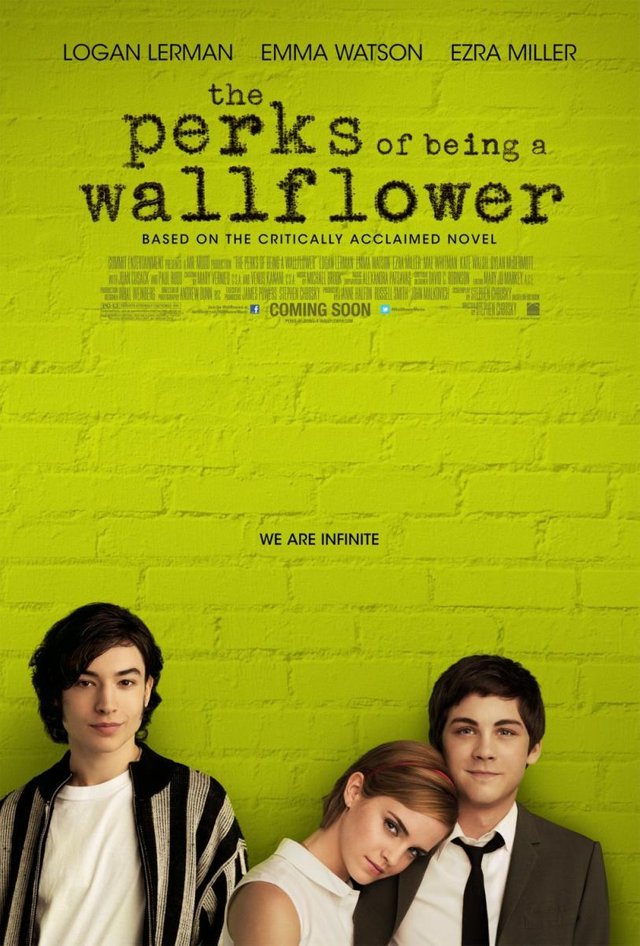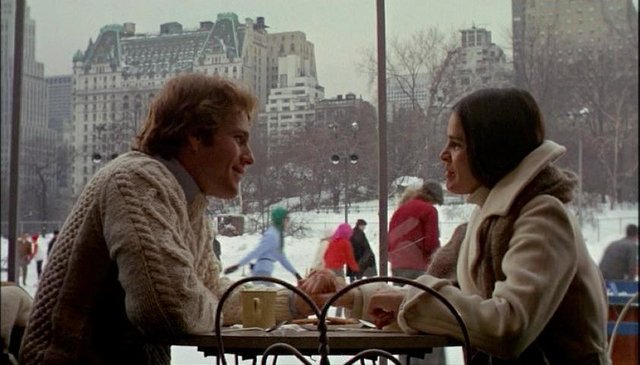Wanna write your own teenage romance? Here are some tips for you!
In recent years there has been an unprecedented proliferation of teenage love stories. It could be said that it all began, in the midst of the boom of stories cataloged as Young Adult, such as Harry Potter and The Hunger Games, with the sad and romantic The fault in our stars; from there, we began to see more and more stories that are similar in form to each other. If you like these types of stories, I encourage you to write your own following what is exposed in this post, because I'm going to reveal to you the common elements of these teenage romances.
Initiation and love
Literature defines as initiation novels or training novels, the stories that portray the transition from childhood to adult life, which is nothing other than adolescence. Being right in the middle of leaving childhood behind and with the desire to face the world of adults, of which one already feels a part even if one is not recognized, the adolescent is the perfect character for the battle. It is known by all that a young man or woman between fourteen and eighteen years of age (sometimes even a little older) is a being dissatisfied with his surroundings, a rebel, someone who seeks to change the way his life has been led up to then by his parents, teachers, responsible, and wants from now on, take charge of their own existence and be the architect of their destiny. One want to dream and pursue their dreams with determination, whatever the cost.
Within this growth process, love plays a fundamental role. The discovery of sexual attraction is typical of adolescence and obviously if we are talking about romances youth, there must be love. Achieved or not, reciprocated or not, obtained and lost again, it doesn't matter. The ways of love are intricate and the more difficulties that arise, the better for the plot. Whether the ending is sad, happy, or open, is up to each one, as well as the fate of the protagonists, if they remain together or apart. The important thing is that a love story is told, with effusive demonstrations and crazy things committed in its name.
A road trip and the exaltation of the "mediocre"
Adolescence is a journey and what better way to represent it than with a journey, literally speaking? Long road trips are always better. Crossing the country in the best style of Sal Paradise in Kerouac's novel is an opportunity for the characters to get in touch with themselves and with the world in general. It can be a trip with a specific destination at the end, like the one Quentin goes on chasing Margo in Paper Towns, or it can be several short getaways, like the ones Violet and Finch take together in All the bright places, but traveling is a good tool to help achieve that transition, the destination of that journey that adolescence is.
On the other hand, behind were the heroes and heroines of anthology. I would say that from Madame Bovary, the more imperfect a protagonist is, the more empathy he will gain with the public. That is why most of these juvenile romances do not have stars, but rather mediocre, marginalized beings, disparagingly called freaks. Conflictive young people, with drug problems, unpopular, victims of bullying by their high school classmates, but who hide something special inside them. It is like this in The perks of being a wallflower, one of the most successful stories of the genre and the best example to this point. The vital thing is to take that mediocrity, that which others have rejected and give it importance, reinforcing the message that we are all special, it doesn't matter if you are a nerd, if you are not a good athlete, or if you go against the established canon of popularity in your environment. You are special and you deserve to love and be loved.
The Shadow of Death
Eastern legends say that what prompted Siddhartha Gautama to seek the path of enlightenment until he became a Buddha were three encounters with old age, sickness, and death. Logically, the first element has no place in these youth stories, but the other two can bring a lot of emotional force to the plot, especially if they decide to merge. The shadow of death eclipsing the life of one of the protagonists, or both, can be provided by an accident as in the case of If I stay, a film that literally reflects that point between existence and whatever there is beyond; it can also belong to the characters' past, as in the case of Violet in All the bright places; or not be lethal, as in the case of Aimee in The spectacular now who is hit by a car after arguing with her boyfriend Sutter.
While accidents can change the lives of the protagonists in an instant, there is much more drama in a deadly disease. The fault in our stars is a clear example of this element that later exploded dramas such as Now is good with Dakota Fanning, or the most recent Five feet apart, that not only gave both protagonists unbearable medical conditions, but also condemned them to remain separated, at the risk of causing the death of the loved one with their closeness, isn't this perhaps the epitome of a tragic romance?
Now, if you want to do a retrospective study on these stories of love and deadly diseases, John Green's great success was not nearly a pioneer in its use. Prior to The fault in our stars, we have the Japanese Crying out loud in the center of the world from 2004, or the best known and fondly remembered A walk to remember, with Mandy Moore from 2002; both very recent if compared to Love Story, the famous 1970 film with Ali MacGraw and Ryan O'Neal, possessor of the perfect and unrepeatable title for a drama like these.
Oil and Water
The mention of Love Story brought to mind a very important penultimate element that is also common in many of these stories: the apparent incompatibility of the protagonists. In that 1970 drama, Oliver and Jenny belong to different social classes, and that difference conditions and threatens their relationship, just as much as the family enmity between the Montagues and the Capulets in the Shakespearean drama. But the difference can be presented in another way: the bad boy and the good girl, as in the aforementioned The spectacular now, Five feet apart and A walk to remember; the somewhat bland boy and the rebellious girl as in The perks of being a wallflower; the prominent blonde student and the African American freak, as in All the bright places.
But it can also be a difference of styles in the same taste, like Mia's classical music and Adam's Rock band in If I stay; the truth is that the marked difference between the conditions of the protagonists is attractive because it creates the bases for both to leave their comfort zone in the name of love. It is not the same that a romantic boy brings a bouquet of flowers to his beloved, that the motorized drug addict who never has a gesture with anyone, appears one day with a single flower, probably stolen from some garden, to deliver it as an offering that leaves it in evidence. In this case it is much more significant because being tough becomes vulnerable when exposed, as when Landon builds the telescope for Jamie, or fulfills her dream of being in two places at the same time in A walk to remember.Literature and pseudo literature
All the stories that have been mentioned in this post have gone from paper to the big screen. With the exception of the Japanese novel by Kioychi Katayama, all other works are genre novels and not Literature, with a capital letter. And it is so because its authors did not pursue a literary but commercial and wide-ranging achievement. They were not just writing, but creating a product for mass consumption. However, some of them are supported by pillars of universal Literature. Finch is a regular reader of Virginia Woolf on All the bright places, for example; and at that point, John Green is an expert: Paper Towns makes references to Walt Whitman; Looking for Alaska, from the epigraph it mentions The General in his Labyrinth by Gabriel García Márquez and the same The fault in our stars has a literary reference in the fictional favorite author of Hazel Grace and in the diary of Anne Frank that materializes in her house-museum. Although many could criticize this support of the non-literary over the Literary, it should not be harshly criticized since many young people leave the cinema to buy these novels and for them they come in contact with names like Whitman or Woolf, which is to be appreciated.
Finally, the extra touch
In short, we have: adolescent protagonists in love, at least one of them marginalized and preferably opposite; the road, as a motive or as a support; the exaltation of the mediocre, the different; the shadow of death, present in an accident, mourning, or illness, the more serious and far-fetched, the better; and the support in some literary titan. Of course, it is not necessary to make use of all these elements in the same story; just a few. But you have to add something else, add an extra touch. One idea may be to work on a homosexual story, or to use art. Some of the protagonists can write, dance, paint or draw. Art adds sensitivity to characters, even when they don't show it to others. Another idea may be to give a different twist to the plot. Me before you is not a romance between teenagers, but the plot has many of the characteristics that we have described and Lou has the charm of a teenager; Furthermore, the story gives a special twist to the apparent incompatibility between her and Will, as he is bedridden for life in a wheelchair.
So, go over the elements of the formula, pick a few, and add a unique twist. It's all you need to write a teen romance and who knows, maybe one day Netflix will buy your novel and turn it into a movie. Let's write, then.











